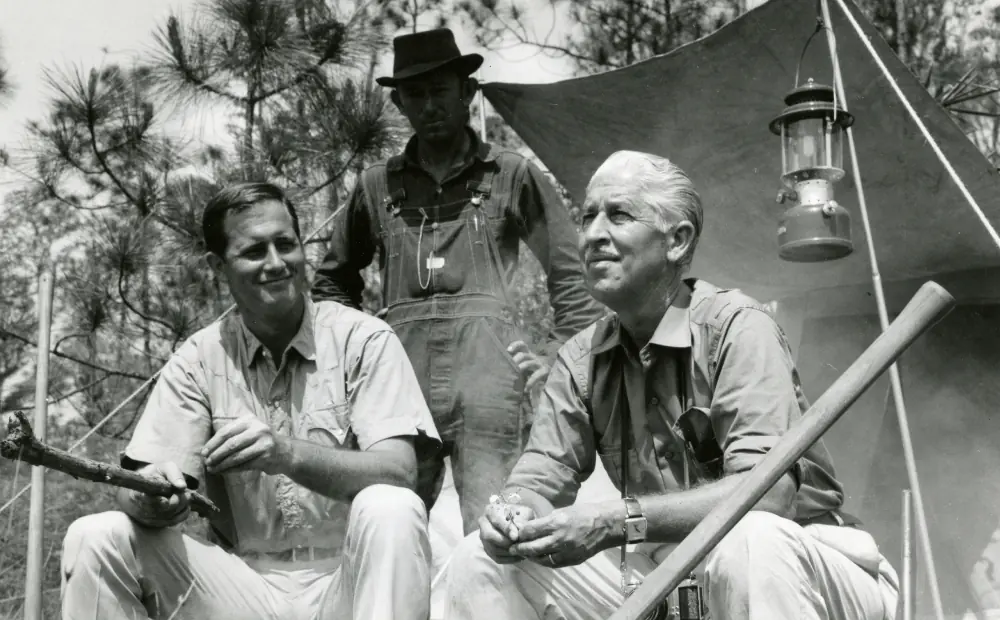0:00
Welcome to the Texas Gulf Coast.
0:05
I'm headed out with wildlife specialist Meredith Haley and Cara Craig into some of the last remaining coastal prairie left on Earth.
0:15
So this is really exciting.
0:16
I have never been in a Texas prairie before.
0:19
This is really a very complex ecosystem.
0:21
Hey.
0:22
Yeah, yeah, it is.
0:24
We have a lot of birds, various sparrows, Meadowarts, birds of prey, raptors.
0:32
We got deer, jack rabbits.
0:35
Gosh, prairie is one of the most overlooked habitats to A lot of people may just see flat, open space, but it's so much more than what you see.
0:44
It holds all sorts of wildlife.
0:47
Located about 60 miles West of Houston, this expansive reserve is called the Attwater's Prairie Chicken National Wildlife Refuge.
0:57
I'm here to learn more about the refuge's namesake.
1:00
Just try not to call it a chicken.
1:03
Prairie chicken is not a chicken.
1:06
It's it's a grouse species.
1:09
The name is kind of unfortunate for them because they're not a chicken.
1:13
They're a grouse.
1:15
It's very different from the chicken that you and I know, the chicken that people eat.
1:23
There used to be about a million of them out there across the coast of Texas.
1:27
Is it true they were down to less than 15 at one, at least here on the refuge.
1:34
Native to Texas, the Attwater's prairie chicken is one of the most endangered birds in all of North America because it depends upon one of the most endangered ecosystems in North America.
1:46
There used to be over 6,000,000 acres of Prairie stretching all along the coast of Texas and Louisiana.
1:52
It has been reduced to isolated fragments.
1:56
A lot of this prairie has been lost due to urbanization, agriculture, fire suppression, the encroachment of brush because of that fire suppression, as well as invasive species.
2:08
As the habitat declined, so did the Prairie chicken population.
2:12
They are currently below 200 in the wild.
2:17
Thanks to weather events like Hurricane Harvey, they were reduced to as low as 12 individuals in the wild.
2:24
Hopefully I'll get to see one for myself, But with only about 100 left in this refuge, the Prairie chickens are tough to spot.
2:33
How does this this thing work right here in the roof?
2:36
Well, we got a big antenna off the top of this truck.
2:41
We, we rigged these up ourselves, spend this antenna and we listen for any sort of beep.
2:49
Fortunately, some of the birds here are high tech chickens.
2:53
They're wearing transmitters so Meredith and her team can keep tabs on them.
2:58
They'll stay hunkered down in the grass until you're right on top of them.
3:02
Their feathers are amazing camouflage out here.
3:05
Sometimes we can't even see them, even though we know that it's sitting right there.
3:10
Maybe we've got a ping here, which means we may have a Prairie chicken.
3:15
Have what?
3:16
We pull over right here and we can get out the handheld and hear what we can hear.
3:22
OK, let's do it.
3:28
She was hard to find, but there in the grass, I could just make out a female Prairie chicken.
3:36
The Atwater Prairie chickens prefer wide open space where they can nest in native Prairie grasses and have real clear spaces, which was naturally grazed by bison, which we mimic with cattle.
3:48
Now in the springtime, the males will go out onto the Prairie and they'll do what we call booming.
4:00
It's their mating dance.
4:02
They puff up their feathers a little bit and they blow up these bright orange air sacs on their neck and they stomp their feet really fast and they let out this sound.
4:18
It's honestly indescribable, the feeling that you get hearing such a strong sound come out of a little bird and how far it can go.
4:27
It's foggy, it's quiet, and yet you hear like this eerie across the Prairie before you even see the birds.
4:36
You hear that booming and you see that display.
4:38
It really captures you in the moment.
4:41
The dance, it just makes me laugh every time I look at it.
4:44
Just makes you kind of want to shake with it a little bit.
4:48
They might even fight each other.
4:50
They get pretty territorial during that time of year and it's all for the sake of getting a mate.
4:57
Protecting this historic refuge is a complex task.
5:01
Staff members harvest and plant native grass seeds.
5:05
They manage herds of cattle that mimic the beneficial grazing once carried out by American bison, and they use prescribed burns to invigorate native grasses and remove invasive brush.
5:19
They also mitigate the spread of invasive red fire ants, which devastated the native insect populations that Prairie chicken chicks rely on for food.
5:30
A healthy prairie habitat means you're going to have more prairie chickens.
5:34
It's an indicator species is what we call it.
5:37
If we're managing the habitat specifically for this prairie chicken, we're meeting the needs of all the other wildlife indirectly.
5:47
This prairie is beautiful and intricate.
5:50
I want the future generations to experience that.
5:53
Save the prairie, manage prairie and the prairie chicken stands a much better chance of survival, and so do the other wildlife too.












